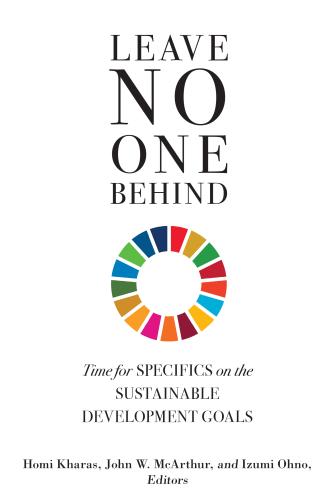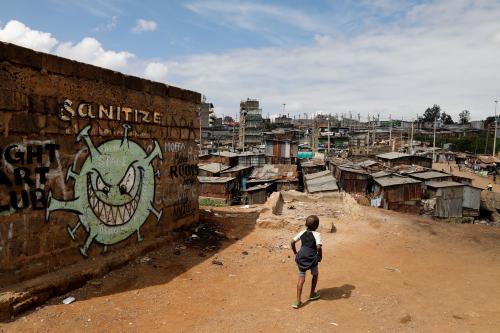Where a person is born is the best predictor of their lifetime prospects. Yet, “spatial” income inequality has been widening. Geographic wealth disparities have been increasing in rich and poor countries alike. Eighty percent of global economic activity is generated on 3 percent of the landmass. Countries with worsening regional inequality, in the past decade, have seen greater political polarization, conflict, and government turnover.
In recent research, we examine spatial patterns in income levels and growth across 2,894 subnational areas in the world. The map in Figure 1 shows 538 administrative areas we call poverty hotspots—areas that are classified as low income in both 2000 and 2015 using the historical income thresholds provided by the World Bank. These were home to 1.12 billion people in 2015. Although largely concentrated in sub-Saharan Africa, Central, and South Asia they are distributed across 77 countries, far more than the 31 countries classified by the World Bank as low income.
Figure 1. World’s poverty hotspots
Subnational GNI per capita (Atlas method, current US dollars) below $755 in 2000 and $1,025 in 2015
A quick examination of these poverty hotspots also shows a significant spatial “lag” across regions. Growth in regions tends to spill over to neighboring regions, even if they are in different countries. For every 1 percent increase in a region’s per capita income growth, its immediate neighbors can expect to see a 0.64 percent per capita growth increase, even if nothing else changes in those regions, regardless of national borders. Conversely, regions with shrinking economies will also negatively affect their neighbors. Thus, there is a tendency for growth and poverty not only to persist over time, but to cluster in particular locales.
But are some regions geographically “cursed”? For over two decades, the international development community has debated whether countries are affected by geographic “determinism”—i.e., whether countries that are located in the tropics, that are landlocked, or that have limited access to ocean trade through sea ports or navigable rivers, face structural barriers to long-run growth. Looking subnationally, the evidence is mixed. On the one hand, favorable soil, a temperate climate (and lower communicable disease burden), and lower elevations all make it less likely that a region will be stuck in persistent poverty. On the other hand, the evidence also demonstrates the powerful, wealth-enhancing effects of education. Increasing the average estimated years of schooling by an extra year would boost regional per capita growth by 3 percent over 15 years. In addition to education, physical connectivity is key for growth. Governments’ ability to project their authority across territory and to mitigate intrastate conflicts within their countries’ borders similarly boosts growth prospects.
Our findings suggest that three types of interventions may be necessary to make a difference in subnational regional development: those that improve human capital, those that compensate for geographical disadvantages through investments in technology and infrastructure, and those that improve the functioning of political institutions. Simply assuming that migration or catch-up growth will equalize opportunities, by contrast, is not supported by our evidence. In particular, demographic changes are working in the opposite direction for low-growth areas: Population growth in these hotspots is greater than in other areas because families are poor and mothers have less access to health care and education. So, historically, natural population growth in poor localities has outstripped out-migration.
This has important implications for those concerned with the Leave No One Behind agenda. For international donors, it suggests that providing money to governments of countries that are poor on average does not guarantee that the money will trickle down to improving the lot of poor people living in poor places. Better geotargeting of projects is required. For governments, it means facing trade-offs that balance the desire for faster growth through agglomeration in larger centers of economic activity and more inclusive growth that reaches far-flung areas. For everyone, it points to the need to manage growth spillovers, either positive or negative, across regions and contiguous countries. For the more than 1 billion people still living in poverty hotspots, it points to migration, both domestic and international, as the surest means of escaping poverty.










Commentary
Over 1 billion people live in poverty hotspots
December 2, 2020